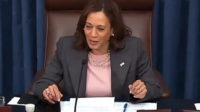This year’s United Nations annual Climate Change Conference, COP28, ended two weeks of intense negotiations among global attendees with more disparate energy transition priorities than usual—as officials announced the event's first agreement in three decades to “transition away from fossil fuels to reach net zero.”
Attendees representing nearly 200 nations at the conference—held in Dubai, UAE from Nov. 30 to Dec. 13—agreed to steps that include a goal to triple renewable energy and nuclear power investment and double the global average annual rate of energy efficiency by 2030 in the first COP28 global stocktake.
On fossil fuels, the pact asks countries to speed efforts to phase down—in the only instance that phrase is used—unabated coal power, while still offering "transitional" fossil fuel options such as hydrogen fuel and carbon capture and storage to reduce emissions.
“At long last the loud calls to end fossil fuels have landed on paper in black and white at this COP,” said Jean Su, energy justice director at the Center for Biological Diversity. “While this agreement offers faint guidelines toward a clean energy transition, it falls far short of the transformational action we need.”
The U.S. Energy Dept on Dec. 14 awarded up to $890 million in funding to demonstrate technologies designed to capture, transport, and store 7.75 million metric tons of carbon emissions at power plant projects in California, North Dakota, and Texas that it said would have potential to deliver public health benefits to communities and help revitalize local economies,
If there is any hope of meeting the 2015 Paris agreement’s goal of keeping global warming below 1.5° C, it will take “deep, rapid and sustained reductions” in global greenhouse gas emissions of 43% by 2030 and 60% by 2035 compared to 2019 levels, according to the COP28 assessment. The current level of expected warming is 2.1°C to 2.8°C, down from the 4°C estimated prior to the pact if no actions were taken.
“The world needed to find a new way,” said Sultan Al Jaber, whose selection as COP28 president was controversial since he also is CEO of UAE-owned Abu Dhabi National Oil Co. “It is an enhanced, balanced, but make no mistake, historic package to accelerate climate action,” he contended.
But countries are not legally bound to execute on the COP28 commitments.
"As engineers and scientists who research the necessary changes to pull off this energy system transition, we believe this agreement falls short in addressing the use of fossil fuels at the heart of the climate crisis," said an opinion by three experts from U.S.-based Columbia University and U.K.-based Lund University and Imperial College. "By not explicitly defining these terms, COP28 missed the chance to set a firm, scientifically-backed benchmark for future fossil fuel use." But they added, "with many parties strongly in favor" of that strategy, "It would not be surprising if coalitions of like-minded governments proceed with climate clubs to implement it."
Targets “will drive needed investment across the building sector which has the opportunity, and now the imperative,” to significantly cut greenhouse gases, said Peter Templeton, U.S. Green Building Council CEO.
Mixed Bag
Bill Hare, CEO of policy group Climate Analytics, described the agreement as a “mixed bag,” noting that “outside of the energy package, the decision delivers well on the roadmap for governments having to ratchet up climate targets to 2025, with strong references to science and noting that feasible, effective and low-cost mitigation options are already available in all sectors to keep 1.5°C within reach.
Fossil fuel sector representatives were in force at the event. Dustin Meyer, a senior vice president at the American Petroleum Institute, said “the world will need more sources of energy, not fewer” and that the oil and gas industry is focused on building on emissions reduction progress already made through technology innovation and investments.
While operating offshore wind capacity is set to reach 250 GW worldwide by 2030—that is just half of what is needed, says the International Renewable Energy Agency. The sector “has experienced a lot of headwinds in 2023; government and industry need to work together to solve supply chain, price inflation and policy challenges … making outcomes of COP28 critical to enable offshore wind to play its role,” says Breanne Gellatly, partner at consultant ERM.
Other infrastructure and financing initiatives received added commitment and funding.
U.S. government environmental officials used the event setting to announce a final methane reduction rule they said will prevent about 58 million tons of emissions between 2024 and 2038, with about 50 oil companies and other global energy firms vowing to end routine flaring by 2030 and have net-zero operations by 2050. Emphasizing the need for commitment, UN Secretary-General Antonio Guterres said: “There’s no room for greenwashing.”
Some 37 countries also agreed to standardize processes to certify types of low-carbon hydrogen and derivatives such as green ammonia, to accelerate global trade through “mutual recognition and interoperability” that would address market fragmentation risks and boost investor confidence, a COP28 declaration said. Market watchers say that as few as 4% of announced hydrogen projects advance to final investment decision because of lender caution.
Action to expand global nuclear power to reach net-zero goals gained key traction—even with some opposition to its development and current construction project risks. The 22 countries committing to tripled investment also includes global oil-producing leader UAE, which now is finishing its first large nuclear reactor project—a 5.6-GW, $24-billion complex set to provide about 25% of the nation’s power supply.
Commitments to the loss and damage fund, whose financing approach was agreed to at the start of the conference, grew to more than $700 million by COP28 close. Six new countries pledged money to the Green Climate Fund’s second replenishment, raising its total to $12.8 billion.
“Announcements at COP28 moved things in the right direction with billions of dollars pledged to bolster resilience and support climate action in developing countries,” said Ani Dasgupta, president and CEO of the World Resources Institute, “But it is nowhere near enough,” saying $4.3 trillion worth of finance is needed by 2030 to reach climate goals.









Post a comment to this article
Report Abusive Comment